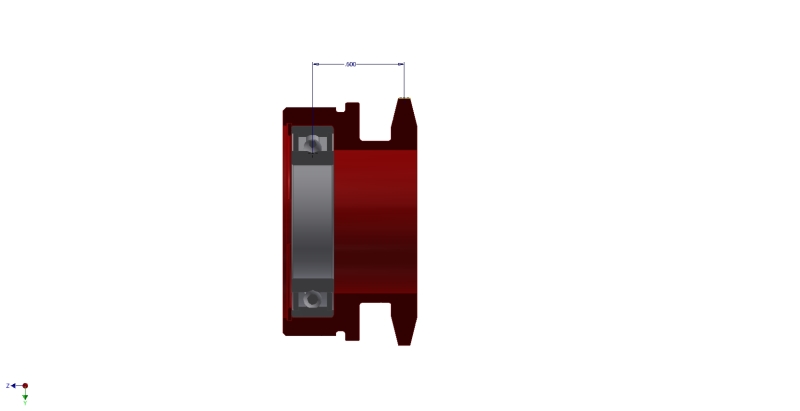ddowns46
Mechanical
- Feb 13, 2013
- 19
I have an application where a roller chain sprocket hub is supported by a single deep groove ball bearing that is supported by a 20mm shaft. In order to get the sprocket tooth count to a low enough number to support the application, the sprocket is situated adjacent to the ball bearing (to clarify, the OD of the bearing is larger than the required ID of the sprocket, creating the need for the offset). This obviously creates a moment/tilting load in addition to the radial load that is applied by the chain. I would like to hear your input on the feasibility of using the following bearing based on the following speed and loads:
Bearing: 6804-2RS
OD: 32mm
ID: 20mm
Width: 7mm
Dynamic Load Capacity: 900 pounds
Static Load Capacity: 594 pounds
Maximum shaft speed: 4000 RPM
Maximum Radial Load: 288 pounds
Maximum Tilting Load: 14.4 foot pounds
There is already a product on the market that uses this exact same setup so I know that it works. I am simply trying to understand what the margin of safety is.
It is not possible to add a second bearing and it is not possible to increase the bearing size.
Bearing: 6804-2RS
OD: 32mm
ID: 20mm
Width: 7mm
Dynamic Load Capacity: 900 pounds
Static Load Capacity: 594 pounds
Maximum shaft speed: 4000 RPM
Maximum Radial Load: 288 pounds
Maximum Tilting Load: 14.4 foot pounds
There is already a product on the market that uses this exact same setup so I know that it works. I am simply trying to understand what the margin of safety is.
It is not possible to add a second bearing and it is not possible to increase the bearing size.

